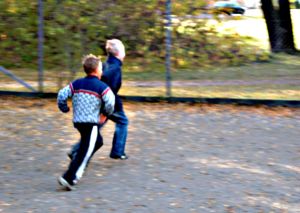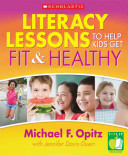Stay up to date on news, events and special features.
The Importance of Physical Education
 Five years ago, Richard Reiss, the physical education teacher at Public School 197 in Far Rockaway, Queens, went to the principal with a problem: not even the most athletic among his students, most of whom are poor and black or Latino, had enough endurance to run a mile.
Five years ago, Richard Reiss, the physical education teacher at Public School 197 in Far Rockaway, Queens, went to the principal with a problem: not even the most athletic among his students, most of whom are poor and black or Latino, had enough endurance to run a mile.
The once-a-week physical education classes the school offered, far from what was needed to fulfill the minimum requirement set by the state, were not cutting it. Mr. Reiss suggested starting a walking club, then found out about something better: a free program led by New York Road Runners that is now operating in 450 schools across New York City and provides prizes based on miles logged.
P.S. 197’s 550 students, from prekindergarten through fifth grade, still have regular physical education classes only once a week, but 40 fourth- and fifth-grade pupils show up daily for the optional program at 7 a.m., 80 minutes before the first bell.
“When you’re given a limited budget, you have to ask yourself, ‘What’s the priority?’ ” said Christina Villavicencio, who took over as principal at P.S. 197 last month. “Should I hire another science teacher or a gym teacher?”
Most states mandate physical education from kindergarten through 12th grade, with New York and five others — Illinois, Iowa, Massachusetts, New Mexico and Vermont — setting minimum amounts of instructional time, according to a report by the National Association for Sport and Physical Education released last year.
New York requires 120 minutes a week through sixth grade, and at least 90 minutes a week for seventh and eighth grades, but a recent audit of 31 elementary schools by the city comptroller, John C. Liu, found that none of them were in compliance.
Principals and other education officials say the combination of budget cuts and testing pressures have relegated physical education to the dispensable category, despite city and federal efforts to combat obesity and improve health by promoting nutritious foods and frequent exercise.
But some teachers and principals have gotten creative to prioritize movement during the school day, stretching money, space and time to fit in exercise wherever they can.
Laptops in the Classroom –A Classroom goes Digital
 MUNSTER, Ind. — Laura Norman used to ask her seventh-grade scientists to take out their textbooks and flip to Page Such-and-Such. Now, she tells them to take out their laptops.
MUNSTER, Ind. — Laura Norman used to ask her seventh-grade scientists to take out their textbooks and flip to Page Such-and-Such. Now, she tells them to take out their laptops.
The day all have seen coming — traditional textbooks being replaced by interactive computer programs — arrived this year in this traditional, well-regarded school district, complete with one naysaying parent getting reported to the police. Unlike the tentative, incremental steps of digital initiatives at many schools nationwide, Munster made an all-in leap in a few frenetic months — removing all math and science textbooks for its 2,600 students in grades 5 to 12, and providing a window into the hurdles and hiccups of such an overhaul.
The transformation, which cost $1.1 million for infrastructure, involved rewiring not just classrooms but also the mindset of students, teachers and parents. When teachers started hearing that “the server ate my homework,” they knew a new era had begun.
“The material we’re teaching is old but everything around it is brand-new,” said Pat Premetz, chairwoman of the math department at Wilbur Wright Middle School in Munster, who described the initiative as both “very overwhelming” and “the most exciting thing to happen in my 40 years of teaching.”
“This isn’t stressing out students,” Ms. Premetz added. “It’s stressing out teachers because of some of the technological problems, and parents who are wondering why their kids are on the computer so much.”
Munster is hardly the first district to go digital. Schools in Mooresville, N.C., for example, started moving away from printed textbooks four years ago, and now 90 percent of their curriculum is online. “It didn’t happen overnight for us — it was an incremental change,” said Mark Edwards, Mooresville’s superintendent of schools. “The competency is evolutional.”
THIS JUST IN: New Book @ Education Library
Books as bridges : using text to connect home and school learning / Jane Baskwill
 Based on research that shows that parents play a vital role in raising a reader, Books as Bridges offers an effective and efficient way to use touchstone texts, including children’s picture books, to help create a common reading experience for the class that can be extended to the home. This practical book introduces four guiding principles—predictable structures, nonfiction, comprehension, and imagination and language play—describing each principle in terms of a series of strategies, which are highlighted by their use with specific touchstone books, and supported by lists of related books to consider. (via Google Books)
Based on research that shows that parents play a vital role in raising a reader, Books as Bridges offers an effective and efficient way to use touchstone texts, including children’s picture books, to help create a common reading experience for the class that can be extended to the home. This practical book introduces four guiding principles—predictable structures, nonfiction, comprehension, and imagination and language play—describing each principle in terms of a series of strategies, which are highlighted by their use with specific touchstone books, and supported by lists of related books to consider. (via Google Books)
Click here to go directly to this item in the UBC Library Catalogue
THIS JUST IN: New Book @ Education Library
Literacy Lessons to Help Kids Get Fit & Healthy
 In this inspiring, breakthrough book, nationally respected educator and fitness expert Michael F. Opitz together with veteran teacher Jennifer Davis-Duerr share their secrets for combining literacy-rich, ready-to-use lessons with easy-to-implement fitness exercises. You’ll discover how to weave fitness (physical, nutritional, social, and emotional) into your existing classroom literacy routines—guided reading, read-aloud, independent reading, readers and writers workshop —for the invigorating workout today’s students urgently need. For use with Grades 1–6. via Google Books
In this inspiring, breakthrough book, nationally respected educator and fitness expert Michael F. Opitz together with veteran teacher Jennifer Davis-Duerr share their secrets for combining literacy-rich, ready-to-use lessons with easy-to-implement fitness exercises. You’ll discover how to weave fitness (physical, nutritional, social, and emotional) into your existing classroom literacy routines—guided reading, read-aloud, independent reading, readers and writers workshop —for the invigorating workout today’s students urgently need. For use with Grades 1–6. via Google Books
Click here to go directly to this item in the UBC Library Catalogue
Should Chess Be Taught in School?
 The 120 elementary school children sat so quietly and intently that you might have assumed this was a mass detention period.
The 120 elementary school children sat so quietly and intently that you might have assumed this was a mass detention period.
But it was chess, not confinement, in an Oak Brook hotel ballroom on Columbus Day. And the lessons learned might assist school leaders everywhere, including those attempting a systemwide resuscitation for Rahm Emanuel, Chicago’s very disciplined, if impatient, mayor.
“My dream is to get in front of education decision makers and convince them to make chess part of the curriculum for K through second grade,” said Susan Polgar, the star of the show. “That’s when thinking patterns and habits are formed. It should be mandatory, like physical education.”
To read the rest of the New York Times article please click here